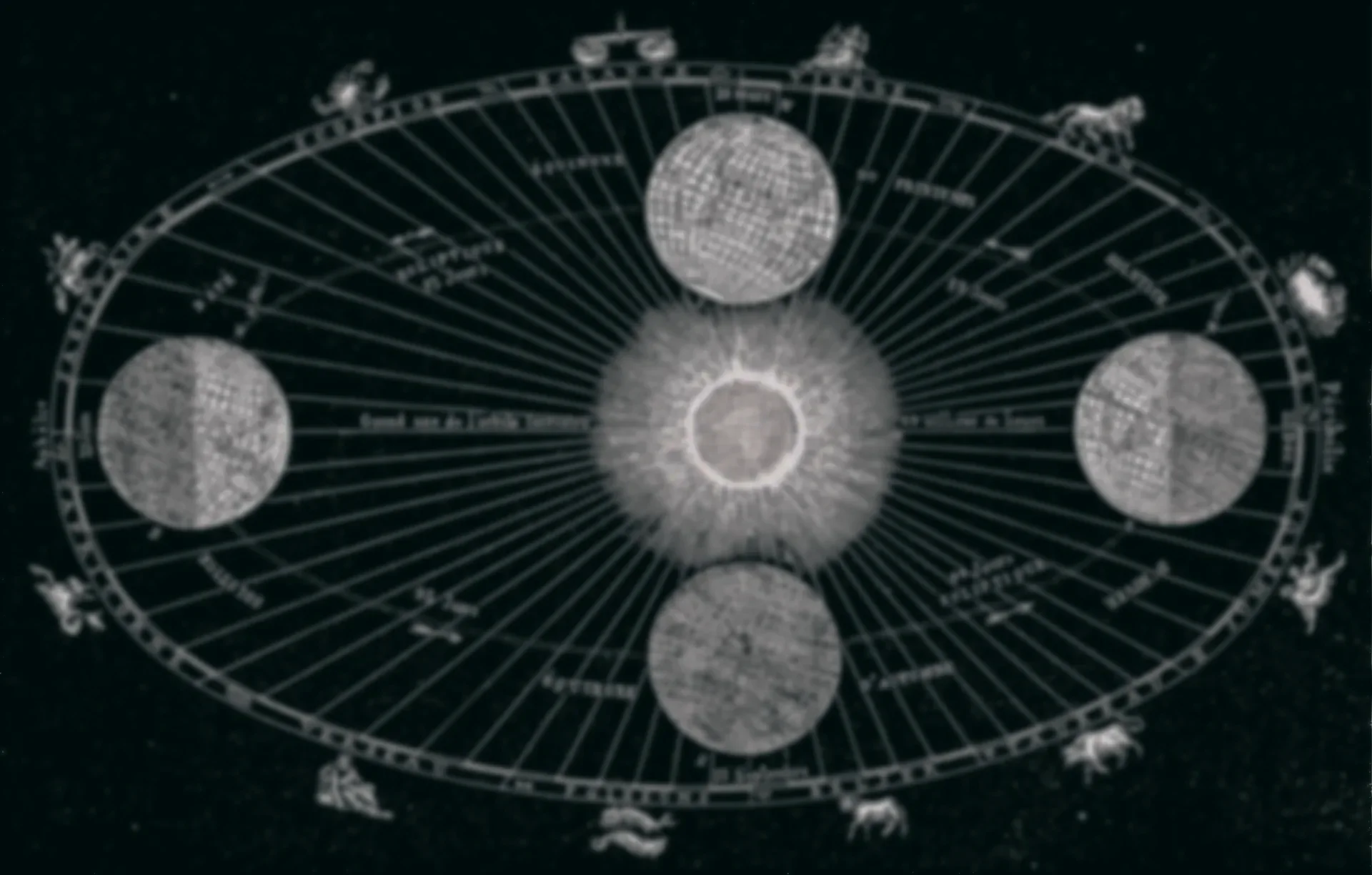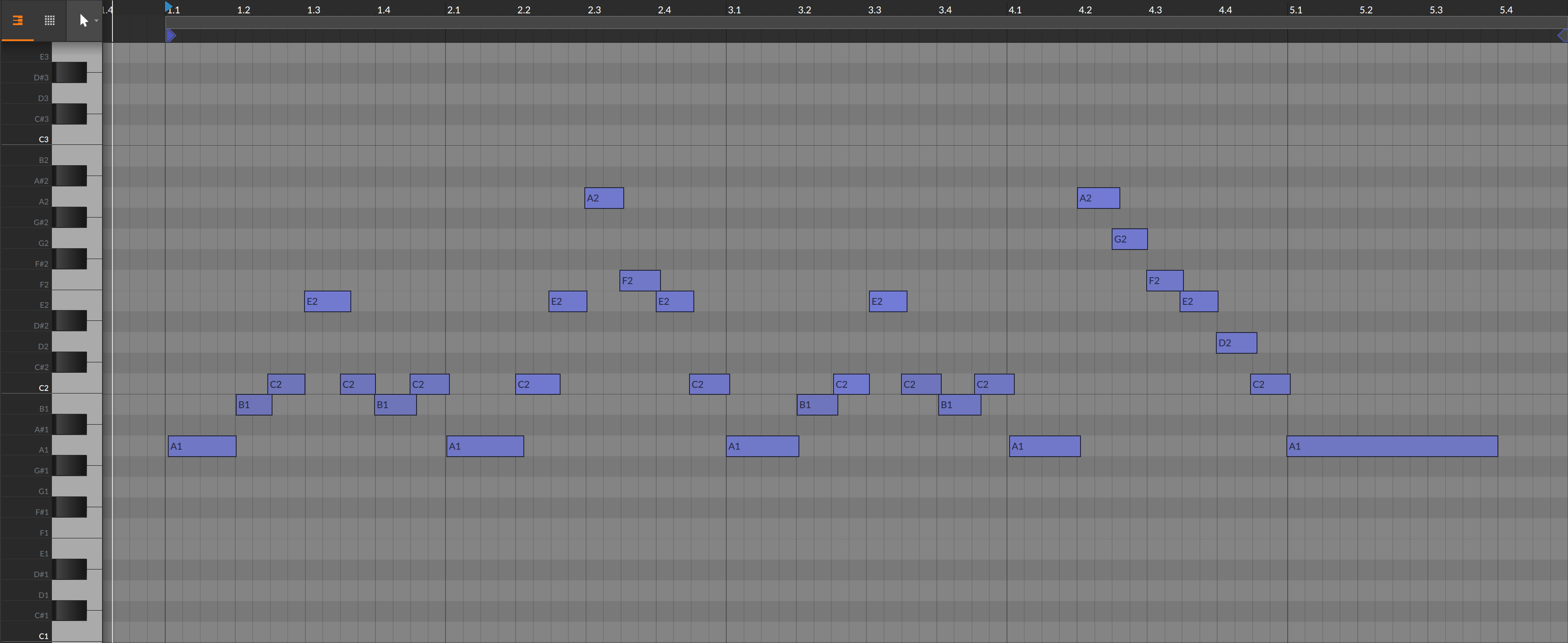Contents
1. “Center” of a Scale?
In the previous session, I introduced two scales as the most fundamental scales in Western music.
Comparing the two scales, the only difference is where scales start, which tones work as the central tones.
But what does it mean by start or center? It’s about music, the invisible art. You can neither see it nor touch it. The starting point of a scale, the center of a scale… How can we discern them?
2. Tonal Center and Tonality
First of all, how do we find “stories” in the invisible, wordless world of sound? —Simply put, it’s through bias, tendency or imbalance of tones.
Here is a typical example where this “bias” is clearly evident. The pitch range fits within A to the octave above A, and both the first and last notes are A. Additionally, A is emphasized in alignment with the rhythmic blocks. While the note C is also used, it only appears briefly in the middle of the melody line and does not exhibit any behavior that suggests centrality. All of these elements collectively instill the impression that A is the focal point of the music, making it lookis like as if A is the musical “home base”.
This kind of bias, the emphasis on a certain note, is what music theory refers to as the “center”. In actual compositions, although it may not be as blatant as this, a musical center naturally emerges from structural biases. This might be similar to how a class leader naturally emerges in school without the need for an election🕺
In reverse, what would music sound like if complete equality were achieved?
This is a phrase where all the 12 pitches occur with exactly the same frequency, rhythm, and in a random order. With no discernible tendency present, you can’t perceive a narrative as music. In this case, the musical “center” is also left ambiguous. This is, of course, a form of music, but it’s a bit different from the music that ordinary people enjoy in their daily lives.
Thus in most popular music, biases arise from the melody, chord progressions and their rhythms, establishing a center. And such differences in emphasis naturally influence the mood of the resulting music. Even if using the same seven white keys, the scale with C centered and the one with A centered are entirely different to each other.
In music theory, this central tone is termed a Tonal Center, or Tonic.
- Tonal Center
- A particular pitch within a song that behaves as a central reference. A tone that works as the point of departure and the destination in a composition1.
- Octave differences are disregarded. Say when D works as the tonal center, D in all octaves can behave as the “home base”.
The first example above is a very clear case of pronounced bias, but in actual songs, multiple parts of phrases, chords, rhythms, and various elements come together, determining the center.
Howard Hanson, an American composer, conductor, educator and music theorist, states the following regarding centricity in music:
The advantage of a tonal center would seem to be the greater clarity which a melody derives from being organized around some central tone. Such organization avoids the sense of confusion and frustration which frequently arises when a melody wanders about without any apparent aim or direction. Hanson, Howard. “Harmonic Materials of Modern Music”(p.56).
Presenting a story where sounds move away from and return to the center in a clear and understandable way is fundamental to creating enjoyable and memorable music for listeners.
Tonality
And when a song has a specific pitch as its tonal center, the song is said to have Tonality. Tonality is an abstract term referring to the relationship between a central tone and the other tones, often metaphorically described as an “organization” of sound.
- Tonality
- The organized relationship of pitches around a tonal center. An attribute of a composition that makes you recognize a single tone as the center2.
Unless specifically designed not to establish a definite center (like I did in the first example above), a song naturally gain tonality.
3. Tonal/Atonal Music
Music that has tonality is termed Tonal Music. As mentioned just now, a center is naturally determined when you write a song. Therefore, most music in the world is tonal music; and this is by no means limited to Western music.
This is a primitive nursery rhyme in Japan for over hundreds of years, “Kagome Kagome”, sung for a specific kids’ game3. The children’s singing isn’t adjust strictly to the pitches of 12 notes of the keyboard, but the melody is essentially constructed around the note E♭ as their center.
- “Kagome Kagome”: Centered around E♭
It uses only four notes: B♭, D♭, E♭, and F. And with a clear emphasis on E♭, like starting on E♭, ending on E♭ and most frequently playing E♭, this can be seen as having tonality, hence classified as tonal music.
Atonal Music
Music without tonality is called Atonal Music. You would scarcely find them in popular music—At least you won’t see any atonal music entering a “hit chart”. However, by deliberately listening to such music, you can better appreciate the concept of the “centricity” in music. Let’s listen to a few examples!
Classical Atonal Music
Typical examples of atonal music are found in 20th century’s Contemporary Classical Music. As mentioned in introduction part, composers in that age were eager to create radically new music. As a result of pushing the boundaries from convention to the extreme, they concluded to abandon Tonality.
You might find such music eerie or unsettling. One significant factor contributing to this is the absence of a reference “home base,” making it difficult to grasp the flow of the music. To enjoy this kind of music, you’ll need a different mindset from your usual.
Atonal Music in Films and Games
Atonal music is valued for its mysterious sound and is occasionally used in background music for horror movies, mystery dramas, RPG boss battles, etc.
Therefore, if you aim to become a composer in this genre of music, the techniques invented by the classical world in the 20th century will be highly beneficial.
Electronic Atonal Music
Or you can find atonal songs in the field of electronic music such as ambient music, noise music and so on. Below are the examples. Beware, you should turn down the volume to minimum when listening to the tracks by Masonna and Merzbow!
Haha, some might think the last two tracks are not even music! But make no mistake, they are definitely music. The requirements for music include melody, harmony, and rhythm? No, no, that’s just an arbitrary definition made by people in the past. It’s as absurd as saying “a human requirement is to have white skin.”
Alright, we’ve veered off track a bit… The concept of tonal center is indeed a fundamental and crucial concept in music. Let’s delve deeper into understanding it!



